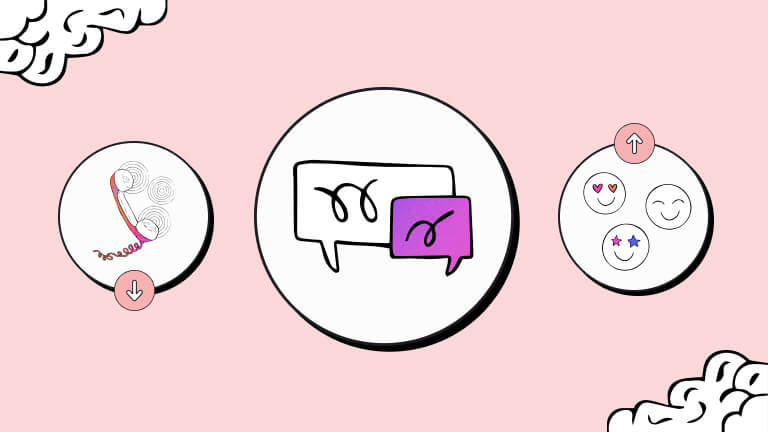article
How to reduce call center volume and boost customer satisfaction
Asynchronous messaging can reduce high call volume and improve the customer experience
November 02, 2022 • 3 minutes

There has to be a better way.
The days of punching in a phone number and putting up with long wait times, disconnections, and multiple transfers are no longer acceptable in the era of consumer empowerment. That frustration is obvious for service agents and customers alike, and it’s clear this part of the journey needs a makeover. Self-service channels aren’t a stand-alone answer, either, as customers often need more guidance.
This is where asynchronous messaging enters the chat (pun intended!).
What is asynchronous messaging?
Simply, asynchronous messaging is a text-based conversation, or chat, that happens on the customer’s time — much like a text message chat with friends — where they can respond when convenient for them. It also takes place in messaging channels and apps customers are comfortable with, like Apple Messages for Business and our WhatsApp integration.
That means no more dreading disconnections and having to start the process all over again. And if the customer is pulled away from the chat, they can return and pick up where they left off when they’re ready. That’s the epitome of convenience.
Understanding all of this, it’s no wonder 74% of customers say they prefer messaging over phone calls. This type of customer service interaction can lead to faster responses, faster resolutions, and a more personalized customer experience down the road with stored conversation histories.
Here are some of the ways to reduce customer calls while actually improving engagement, along with other benefits:
Asynchronous ways to reduce customer service calls and other inbound call volume
- Call to Messaging – Watch efficiency and customer satisfaction soar with this IVR deflection solution that empowers customers who are making incoming calls to switch to the messaging option of their choice in the interactive voice response system. With it, people can skip the longer hold queues and start their inquiry immediately on other channels.
- Proactive Messaging – Outbound, proactive messaging conversations give businesses a chance to show customers they care and understand what they want, even before that customer needs to call customer service. Exceed customer expectations for convenience, and you’ll turn common conversations around subscription renewals and appointment reminders into full-fledged relationship builders.
- Web Messaging – Brands that replace website live chat software with web messaging give customers a chance to proactively engage by clicking on a banner or button — and starting an asynchronous conversation.
Benefits to reducing contact center call volume in these ways
- Faster reply times – With asynchronous messaging, agents can handle more customer inquiries at once, leading to speedier resolutions and increased customer satisfaction — not to mention more productive and efficient agents. Using this strategy to automate customer engagement, a leading blockchain technology company saw their average first response time shrink from 10 days to a mere 30 seconds.
- Increased sales opportunities – Going beyond self-service resources and establishing a deeper connection with customers through messaging can foster loyalty, trust, and potential buying power. A leading telecom company saw a 20% increase in digital sales through messaging.
- More first-contact resolution success – Agents have more time and information at their fingertips, giving them the resources necessary to help make their first reply a satisfying and often conclusive one. A well-built AI chatbot can contribute here, too, as a leading UK rideshare app discovered: Their lost-and-found bot resolved 90% of missing item cases.
Each of these benefits lead to more efficient contact centers, cost savings, and higher customer satisfaction. To see the full list of call reduction strategies and benefits, download LivePerson’s guide, “Call reduction strategies that save money and boost satisfaction.”

